Kristine Hughes's Blog, page 137
October 29, 2011
The Wellington Connection: Mistaken Identity
[image error]
copyright the Brussels Bronte Group
From: Three Years With the Duke, or Wellington in Private Life (1853) by Lord William Pitt Lennox (younger son of the Duke of Richmond)
The theatre in the Park (in Brussels 1814) was opened, under the management of Mr. Penley, with a company of English players. The comedy of John Bull was the first performance, and attracted a most crowded and fashionable audience. Throughout the day, it had been hinted at the box-office, that the Duke of Wellington would probably attend the evening's performance, and a private box had been kept back under this hope. The Duke's avocations, however, prevented his making his appearance upon this occasion, as he had already informed the manager, when asked to patronise the play. This nearly led to a ludicrous mistake—a young officer and myself had been dining in company with the Duke, and, with that good-nature and consideration for which he was famed, he gave us permission to attend the theatre, telling us we might take his carriage after it had set him down. Upon reaching the Park, the carriage was recognised, and a crowd immediately followed it. As we gained the entrance of the theatre, the name of Wellington rent the air. This was communicated to the manager, who thrust his head out from behind the curtain, to give a signal to the leader of the band to play, "See the conquering hero comes!" The report spread like wildfire. The performances ceased—all eyes were anxiously fixed on the vacant box.
In the meantime, we had jumped out of the carriage, had tendered our money, and were surprised at the obsequiousness of the box-keeper, who, thinking we were the precursers of the Duke, begged us to walk into the lobby. The manager, or some official personage, had rushed into the private box to prepare the seats, and there awaited the welcome visiter. We now began to see the mistake that we had unwittingly caused; and, anxious to explain it, we approached the now open box-door. No sooner were our uniforms visible, than the band struck up the heart-stirring melody. In vain did we try to correct the error: the audience had risen, en masse; shouts re-echoed throughout the house; the curtain was drawn up, and the company came forward to sing the national song of "God save the King:" but no Duke of Wellington appeared.
For some minutes the cheers continued, when at length it was announced from the stage, that a slight mistake had occurred— that the avocations of the noble Duke had prevented his attendance; and, after the excitement had a little subsided, my young friend and myself sneaked quietly into the box, placing ourselves behind the curtain, fearful of calling the attention of the public to two mere urchins, who so unintentionally had nearly received the honours due to their chief.
From: Three Years With the Duke, or Wellington in Private Life (1853) by Lord William Pitt Lennox (younger son of the Duke of Richmond)
The theatre in the Park (in Brussels 1814) was opened, under the management of Mr. Penley, with a company of English players. The comedy of John Bull was the first performance, and attracted a most crowded and fashionable audience. Throughout the day, it had been hinted at the box-office, that the Duke of Wellington would probably attend the evening's performance, and a private box had been kept back under this hope. The Duke's avocations, however, prevented his making his appearance upon this occasion, as he had already informed the manager, when asked to patronise the play. This nearly led to a ludicrous mistake—a young officer and myself had been dining in company with the Duke, and, with that good-nature and consideration for which he was famed, he gave us permission to attend the theatre, telling us we might take his carriage after it had set him down. Upon reaching the Park, the carriage was recognised, and a crowd immediately followed it. As we gained the entrance of the theatre, the name of Wellington rent the air. This was communicated to the manager, who thrust his head out from behind the curtain, to give a signal to the leader of the band to play, "See the conquering hero comes!" The report spread like wildfire. The performances ceased—all eyes were anxiously fixed on the vacant box.
In the meantime, we had jumped out of the carriage, had tendered our money, and were surprised at the obsequiousness of the box-keeper, who, thinking we were the precursers of the Duke, begged us to walk into the lobby. The manager, or some official personage, had rushed into the private box to prepare the seats, and there awaited the welcome visiter. We now began to see the mistake that we had unwittingly caused; and, anxious to explain it, we approached the now open box-door. No sooner were our uniforms visible, than the band struck up the heart-stirring melody. In vain did we try to correct the error: the audience had risen, en masse; shouts re-echoed throughout the house; the curtain was drawn up, and the company came forward to sing the national song of "God save the King:" but no Duke of Wellington appeared.
For some minutes the cheers continued, when at length it was announced from the stage, that a slight mistake had occurred— that the avocations of the noble Duke had prevented his attendance; and, after the excitement had a little subsided, my young friend and myself sneaked quietly into the box, placing ourselves behind the curtain, fearful of calling the attention of the public to two mere urchins, who so unintentionally had nearly received the honours due to their chief.
Published on October 29, 2011 00:18
October 27, 2011
Report from Fort Worth, part two
At the JASNA AGM, by Saturday, October 15, I have to admit I was becoming overwhelmed. The plenaries and break-out sessions were outstanding. I was enjoying every minute but I was having a very hard time deciding among the many options for sessions. I luckily overheard a suggestion from some anonymous know-it-all and thus enjoyed the delightful presentation of Margaret Chittick and Vera Quin: "S&S is Full of Surprises."
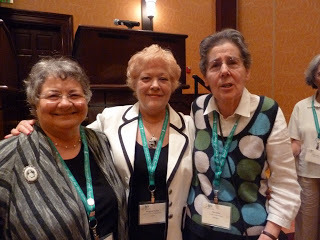 Claire Bellanti, Margaret Chittick & Vera QuinnCarrie Bebris spoke on "Gunsmoke: Dueling in Jane Austen's Time" giving details about the Code Duello, the rules and the equipment, as well as stories about actual duels. The only duel in S&S occurs off-stage and is referred to only briefly, but it was a clear indication of the seriousness with which Col. Brandon dealt with the wayward Willoughby -- a matter of the highest honor.
Claire Bellanti, Margaret Chittick & Vera QuinnCarrie Bebris spoke on "Gunsmoke: Dueling in Jane Austen's Time" giving details about the Code Duello, the rules and the equipment, as well as stories about actual duels. The only duel in S&S occurs off-stage and is referred to only briefly, but it was a clear indication of the seriousness with which Col. Brandon dealt with the wayward Willoughby -- a matter of the highest honor.
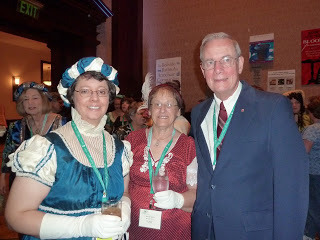 Here is Carrie, costumed later for the ball, with her parents Jane and Jim MorrisMy good pal Nina Davis came over from Dallas to spend some quality time at the JASNA AGM. We spent a lot of time in the Emporium, where the temptations almost overcame us.
Here is Carrie, costumed later for the ball, with her parents Jane and Jim MorrisMy good pal Nina Davis came over from Dallas to spend some quality time at the JASNA AGM. We spent a lot of time in the Emporium, where the temptations almost overcame us.
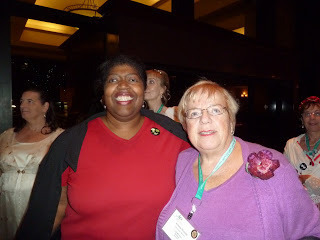 Nina and Vicky at the promenade
Nina and Vicky at the promenade
One of the highlights of the meeting was the talk by Andrew Davies, British screen writer of several Jane Austen adaptations including Pride and Prejudice (Colin Firth version, 1995), Emma (Mark Strong version, 1996) and Sense & Sensibility (BBC, 2008), among many others. Not only was Mr. Davies' presentation well received, he was a perfect guest, willing to pose for pictures with many of us, only a few of which I managed to record.
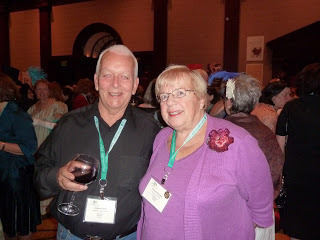 Andrew Davies and Victoria Hinshaw
Andrew Davies and Victoria Hinshaw
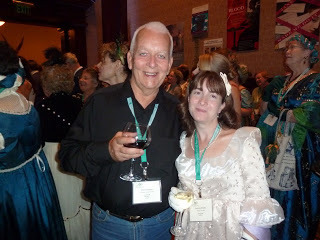 Andrew Davies and Amanda McCabe
Andrew Davies and Amanda McCabe
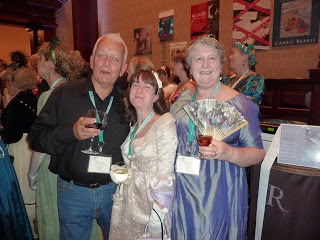 Andrew Davies and authors Amanda McCabe and Jane MullaneyBelow is the conference logo reproduced in white chocolate for a fitting denoument to the banquet.
Andrew Davies and authors Amanda McCabe and Jane MullaneyBelow is the conference logo reproduced in white chocolate for a fitting denoument to the banquet.
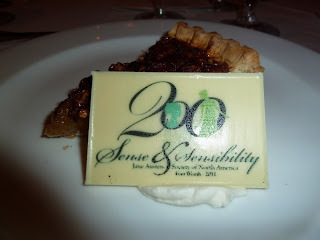
Following the banquest, many of the costumed attendees promenaded around the hotel and the neighborhood.
[image error] Sue Forgue of Chicago, proprietress of the Regency Encyclopedia
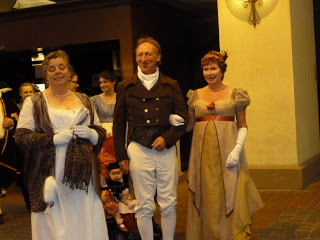 Unidentified stroller on the left, with Steve Lawrence of the Chawton House Library and Mrs. Lawrence
Unidentified stroller on the left, with Steve Lawrence of the Chawton House Library and Mrs. Lawrence
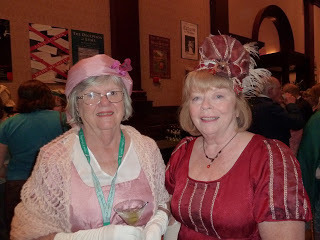 Kathy O'Brien and Judy Beine of JASNA-WI
Kathy O'Brien and Judy Beine of JASNA-WI
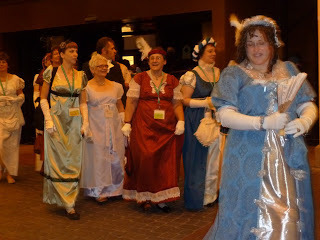 Strollers in costume
Strollers in costume
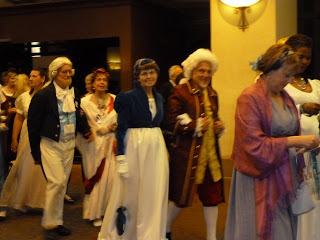 More delightful costumes
More delightful costumes
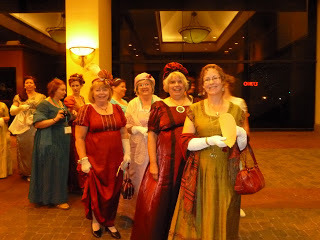 In the foreground, Judy Beine, Kathy O'Brien, Sara Bowen and Kim Wilson
In the foreground, Judy Beine, Kathy O'Brien, Sara Bowen and Kim Wilson
[image error] Lori Davis and Kim Wilson
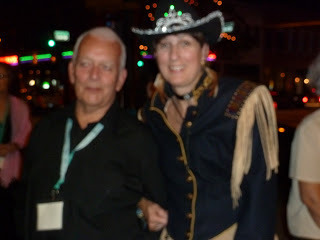 Liz Cooper wore appropriate Texas attire to escort Andrew Davis on the promenade
Liz Cooper wore appropriate Texas attire to escort Andrew Davis on the promenade
After the brunch on Sunday, Nina and I -- along with lots of other Janeites -- visited the Kimball Art Museum in Fort Worth for the newly-opened exhibition on Caravaggio and His Followers.
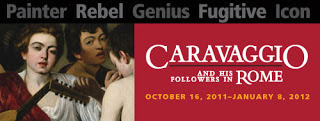
For more information on the Kimball Art Museum, click here.
And here is more information on JASNA, the Jane Austen Society of North America.
Watch for another post on the gala book launch held in Ft. Worth, comuing soon.
Next year, the JASNA AGM will be held in New York City, Brooklyn to be precise, October 5-7,. 2012where the topic is "Sex, Money and Power in Jane Austen's Fiction."

For your video invitation, click here.
 Claire Bellanti, Margaret Chittick & Vera QuinnCarrie Bebris spoke on "Gunsmoke: Dueling in Jane Austen's Time" giving details about the Code Duello, the rules and the equipment, as well as stories about actual duels. The only duel in S&S occurs off-stage and is referred to only briefly, but it was a clear indication of the seriousness with which Col. Brandon dealt with the wayward Willoughby -- a matter of the highest honor.
Claire Bellanti, Margaret Chittick & Vera QuinnCarrie Bebris spoke on "Gunsmoke: Dueling in Jane Austen's Time" giving details about the Code Duello, the rules and the equipment, as well as stories about actual duels. The only duel in S&S occurs off-stage and is referred to only briefly, but it was a clear indication of the seriousness with which Col. Brandon dealt with the wayward Willoughby -- a matter of the highest honor. Here is Carrie, costumed later for the ball, with her parents Jane and Jim MorrisMy good pal Nina Davis came over from Dallas to spend some quality time at the JASNA AGM. We spent a lot of time in the Emporium, where the temptations almost overcame us.
Here is Carrie, costumed later for the ball, with her parents Jane and Jim MorrisMy good pal Nina Davis came over from Dallas to spend some quality time at the JASNA AGM. We spent a lot of time in the Emporium, where the temptations almost overcame us. Nina and Vicky at the promenade
Nina and Vicky at the promenadeOne of the highlights of the meeting was the talk by Andrew Davies, British screen writer of several Jane Austen adaptations including Pride and Prejudice (Colin Firth version, 1995), Emma (Mark Strong version, 1996) and Sense & Sensibility (BBC, 2008), among many others. Not only was Mr. Davies' presentation well received, he was a perfect guest, willing to pose for pictures with many of us, only a few of which I managed to record.
 Andrew Davies and Victoria Hinshaw
Andrew Davies and Victoria Hinshaw Andrew Davies and Amanda McCabe
Andrew Davies and Amanda McCabe Andrew Davies and authors Amanda McCabe and Jane MullaneyBelow is the conference logo reproduced in white chocolate for a fitting denoument to the banquet.
Andrew Davies and authors Amanda McCabe and Jane MullaneyBelow is the conference logo reproduced in white chocolate for a fitting denoument to the banquet.
Following the banquest, many of the costumed attendees promenaded around the hotel and the neighborhood.
[image error] Sue Forgue of Chicago, proprietress of the Regency Encyclopedia
 Unidentified stroller on the left, with Steve Lawrence of the Chawton House Library and Mrs. Lawrence
Unidentified stroller on the left, with Steve Lawrence of the Chawton House Library and Mrs. Lawrence Kathy O'Brien and Judy Beine of JASNA-WI
Kathy O'Brien and Judy Beine of JASNA-WI Strollers in costume
Strollers in costume More delightful costumes
More delightful costumes In the foreground, Judy Beine, Kathy O'Brien, Sara Bowen and Kim Wilson
In the foreground, Judy Beine, Kathy O'Brien, Sara Bowen and Kim Wilson [image error] Lori Davis and Kim Wilson
 Liz Cooper wore appropriate Texas attire to escort Andrew Davis on the promenade
Liz Cooper wore appropriate Texas attire to escort Andrew Davis on the promenade After the brunch on Sunday, Nina and I -- along with lots of other Janeites -- visited the Kimball Art Museum in Fort Worth for the newly-opened exhibition on Caravaggio and His Followers.

For more information on the Kimball Art Museum, click here.
And here is more information on JASNA, the Jane Austen Society of North America.
Watch for another post on the gala book launch held in Ft. Worth, comuing soon.
Next year, the JASNA AGM will be held in New York City, Brooklyn to be precise, October 5-7,. 2012where the topic is "Sex, Money and Power in Jane Austen's Fiction."

For your video invitation, click here.
Published on October 27, 2011 02:00
October 25, 2011
Anonymous

Anonymous, opening on October 28th, is a political thriller advancing the theory that it was in fact Edward De Vere, Earl of Oxford who penned Shakespeare's plays; set against the backdrop of the succession of Queen Elizabeth I, and the Essex Rebellion against her. The film stars
Shakespearean conspiracy theories have been around for centuries and the film does not seek to advance one or the other, but rather it presents the facts and leaves it to the viewer to make up their on mind on the subject. The sets are gorgeous, the acting isn't half bad and the costumes are as authentic as costume designer lisy Christl could make them. Christl boiled, shrank, then dyed and painted the fabrics to transform them into director Roland Emmerich's desired look for the authentic atmosphere of the political snake-pit of Elizabethan England and the movie's picture style with low light that comes from candles and fireplaces.
"With the new developments in digital cinematography, we could really take advantage of candlelight and firelight," says Director of Photography Anna Foerster. "For a period piece, using available light – candles, fireplaces, whatever comes in from outside – makes it real." Together with Emmerich, she developed the look of the film from the paintings of Johannes Vermeer and Georges de La Tour. "Vermeer uses the soft, diffused daylight that comes in through windows; de La Tour would have a single source of light, a candle or a torch."
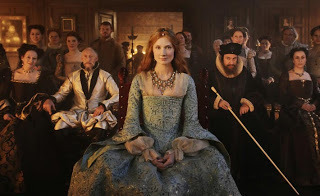 Actress Joely Richardson in the role of Princess Elisabeth Tudor, later Queen Elizabeth I.
Actress Joely Richardson in the role of Princess Elisabeth Tudor, later Queen Elizabeth I.Visit the film's official site here, where you can watch a trailer, as well as design your own coat of arms. A review of the film can be found at here at ScreenCrave.
Published on October 25, 2011 00:49
October 23, 2011
Report from Fort Worth: The JASNA AGM 2011
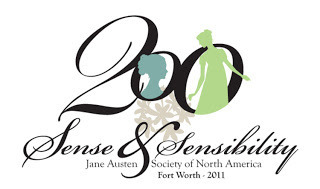 Victoria here, back from five wonderful days at the Annual General Meeting of the Jane Austen Society of North America, held this year in Ft. Worth, Texas. Many thanks to all the wonderful volunteers who organized the meeting, led by Dr. Cheryl Kinney and Rosalie Sternberg.
Victoria here, back from five wonderful days at the Annual General Meeting of the Jane Austen Society of North America, held this year in Ft. Worth, Texas. Many thanks to all the wonderful volunteers who organized the meeting, led by Dr. Cheryl Kinney and Rosalie Sternberg. 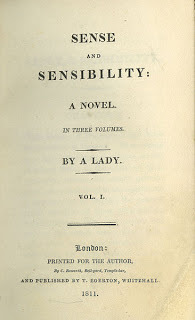
The topic was, of course, Sense & Sensibility, marking the 200th anniversary of Jane Austen's first published novel. The festivities started on Thursday with a few special presentations, including mine on "The Sensible Regency Wedding."
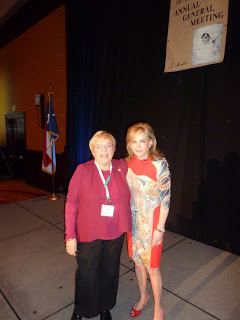
Above, I am posing on the stage with Jinger Heath who spoke on "Regency Cosmetics and Esthetics: A Look to Die For" immediately preceding my talk on Thursday night, October 13. Jinger told the audience about some of the dreadful facial concoctions used by regency-era women to whiten their skin, substances containing lead and other poisons. She also told us how some of their formulas -- such as rosewater and various oils -- were quite beneficial.
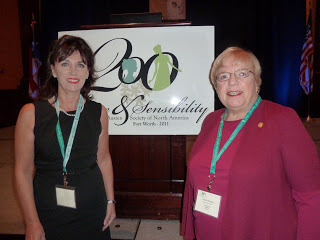 Kathy Yank (left, above) introduced me. Using power point, I talked about the usual simplicity and low-key nature of regency weddings, using particularly the examples of Jane Austen's niece Anna's wedding to Ben Lefroy in 1814, as described by Anna's half-sister Caroline Austen, and Annabella Milbanke's wedding to Lord Byron in 1815, the latter recounted by John Cam Houbhouse (later Lord Broughton).
Kathy Yank (left, above) introduced me. Using power point, I talked about the usual simplicity and low-key nature of regency weddings, using particularly the examples of Jane Austen's niece Anna's wedding to Ben Lefroy in 1814, as described by Anna's half-sister Caroline Austen, and Annabella Milbanke's wedding to Lord Byron in 1815, the latter recounted by John Cam Houbhouse (later Lord Broughton).[image error]
I also talked about royal weddings (and one non-wedding of the Prince of Wales to Maria Fitzherbert), including the ceremony that united Princess Charlotte of Wales to Prince Leopold of Saxe-Coburg. I covered a number of other topics, like courtship, the weddings in Jane Austen's family and in her novels, the laws governing marriage, the ceremony itself, and so on. I concluded by speculating on whether Jane Austen yearned for a wedding of her own.
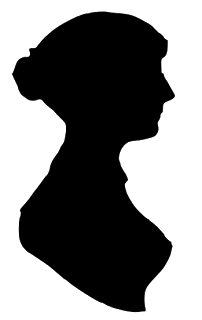
Musing on the remark made by Charlotte Lucas in Pride and Prejudice, "Happiness in marriage is entirely a matter of chance," I asked: "Was Jane Austen's happiness a result of chance? Happiness in her literary success was the result of talent, wit, hard labor, and perseverance. Jane Austen's satisfaction with her accomplishments left nothing to chance."
[image error]
On Friday, Dr. Elisabeth Lenckos (above) of Chicago led us in an examination of whether our dispositions are more like Elinor's or Marianne's. I seemed to hear about a 50-50 split among those sitting near me.
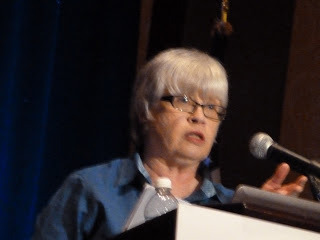
Dr. Joan Ray presented the North American Scholar Lecture at the opening plenary session. She analyzed "Sense & Sensibility as Austen's Problem Novel," citing various difficulties readers, particularly her students, have with the characters and plot. Perhaps most obvious among these problems is whether or not Marianne will find happiness as the wife of Col. Brandon. Dr. Ray, in her charming and humorous manner, convinced us by reading from the text some perhaps-overlooked aspects of Marianne's and the Colonel's behavior and opinions that emphasized the empathetic nature of their personalities. Their essential compatibility, she assured us, would bring them happiness.
As always at JASNA AGMs, it is difficult to chose among the wonderful break-out sessions offered by dozens of well-spoken presenters with a variety of intriguing topics.
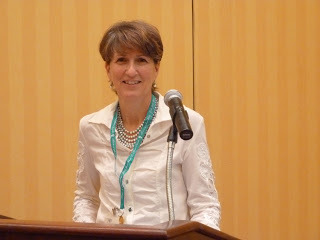
My good friend Elizabeth Philosophos Cooper of Madison talked about "Jane Austen, Publisher: Writing Herself Into Money and Longing for More." Liz documented the publication process for each of Austen's novels, from early unsuccessful attempts through her various methods of reaching publication to the actual funds she received for some of her work, some during her lifetime, and more after her death.
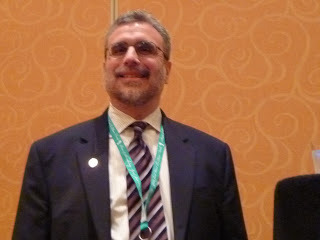
Jeffrey Nigro, Chicago Regional Coordinator, spoke on "The Iconography of Sensibility," illustrating how artists and poets extolled the beauty and drama of the emotional expressionism of the era.
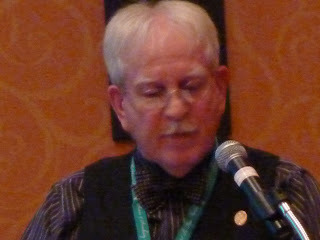
William Phillips, also of Chicago, counted down from the least egregious of the nasties to the worst of the examples in Sense & Sensibility in his talk "Meaner than a Texas Pole-cat: Present day Perspectives on Austen's Largest Cast of Nasties." It wasn't easy to chose the worst among some of the revolting people in S&S, like John and Fanny Dashwood, Mrs. Ferrars and her son Robert -- but of course the nastiest of all was the vindictive and sly Lucy Steele.
I will report further on the activities at Fort Worth -- from an exciting book launch, to the brilliant ball, to the outstanding talks by Andrew Davies and Deirdre Le Faye -- in my next posts.
Stay tuned for much, much more.
Published on October 23, 2011 02:00
October 21, 2011
The Death of Nelson in Letters
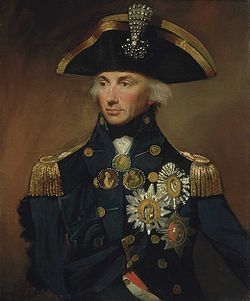 Admiral Lord Nelson
Admiral Lord Nelson(29 September 1758 – 21 October 1805)
Marianne Spencer-Stanhope to John Spencer-Stanhope.
November 20th., 1805. Farnely. We begin to be impatient for more news. Think of poor Lady Collingwood—she was in a shop in Newcastle when the Mail arrived covered with ribbands, but the coachman with a black hat-band. He immediately declared the great victory, but that Lord Nelson and all the Admirals* were killed. She immediately fainted. When she heard from Lord Collingwood first he wrote in the greatest -grief for his friend, and said the fleet was in a miserable state. Perhaps that may bring him home.Are you not pleased with his being created a Peer in so handsome a manner. Why has not Lady Nelson some honour conferred upon her? Surely the Widow of our Hero ought not to be so neglected.
Yesterday we drank to the immortal memory of our Hero. Mr Fawkes has got a very fine print of him.* Lord Collingwood was a Vice Admiral in Nelson's fleet.
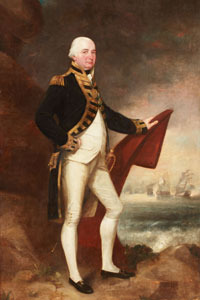 Vice Admiral Cuthbert Collingwood
Vice Admiral Cuthbert CollingwoodA Letter from Mrs. Fitzherbert to Mrs. Creevey.
"Nov. 6, 1805."Dr. Madam,
"The Prince has this moment recd, an account from the Admiralty of the death of poor Lord Nelson, which has affected him most extremely. I think you may wish to know the news, which, upon any other occasion might be called a glorious victory—twenty out of three and thirty of the enemy's fleet being entirely destroyed—no English ship being taken or sunk—Capts. Duff and Cook both kill'd, and the French Adl. Villeneuve taken prisoner. Poor Lord Nelson recd, his death by a shot of a musket from the enemy's ship upon his shoulder, and expir'd two hours after, but not till the ship struck and afterwards sunk, which he had the consolation of hearing, as well as his compleat victory, before he died. Excuse this hurried scrawl: I am so nervous I scarce can hold my pen. God bless you.
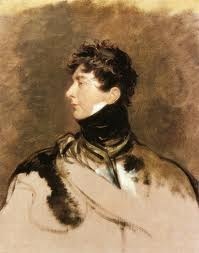 The Prince of Wales, afterwards King George IV
The Prince of Wales, afterwards King George IVCorrespondence from Mrs. Creevey to Mr. Creevey.
"Nov. 7, 1805.
". . . [The Prince's] sorrow [for Nelson's death] might help to prevent his coming to dinner at the Pavillion or to Johnstone's ball. He did neither, but stayed with Mrs. Fitz; and you may imagine the disappointment of the Johnstones. The girl grin'd it off with the captain, but Johnstone had a face of perfect horror all night, and I think he was very near insane. I once lamented Lord Nelson to him, and he said:— 'Oh shocking: and to come at such an unlucky time!' . . ."
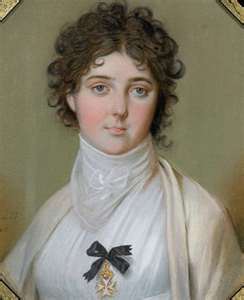 Emma, Lady Hamilton
Emma, Lady Hamilton"8th Nov.
". . . The first of my visits this morning was to 'my Mistress' (Mrs. Fitzherbert) ... I found her alone, and she was excellent—gave me an account of the Prince's grief about Lord N., and then entered into the domestic failings of the latter in a way infinitely creditable to her, and skilful too. She was all for Lady Nelson and against Lady Hamilton, who, she said (hero as he was) overpower'd him and took possession of him quite by force. But she ended in a natural, good way, by saying:—' Poor creature! I am sorry for her now, for I suppose she is in grief.'"
"Dec. 5,1805.
". . . It was a large party at the Pavillion last night, and the Prince was not well . . . and went off to bed. . . . Lord Hutchinson was my chief flirt for the evening, but before Prinny went off he took a seat by me to tell me all this bad news had made him bilious and that he was further overset yesterday by seeing the ship with Lord Nelson's body on board. . . ."
From an undated letter written by Vice Admiral Collingwood to Edward Collingwood - My dear friend received his mortal wound about the middle of the fight, and sent an officer to tell me that he should see me no more. His loss was the greatest grief to me. There is nothing like him for gallantry and conduct in battle. It was not a foolish passion for fighting, for he was the most gentle of human creatures, and often lamented the cruel necessity of it; but it was a principle of duty, which all men owed their country in defence of their laws and liberty. He valued his life only as it enabled him to do good, and would not preserve it by any act he thought unworthy. He wore four stars upon his breast and could not be prevailed to put on a plain coat, scorning what he thought a shabby precaution: but that perhaps cost him his life, for his dress made him the general mark.
He is gone, and I shall lament him as long as I live.
Published on October 21, 2011 01:11
October 19, 2011
An Elopement,a Stately Home and a Royal Visit - Part Two
From Reminiscences For My Children by Catharine Mary Howard - 1838
VISIT OF KING GEORGE III. AND QUEEN CHARLOTTETOROBERT LORD PETRE, AT THORNDON HOUSE October 19th, 1778.
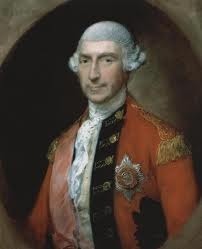 General Lord Amherst
General Lord Amherst
September 22nd—General Lord Amherst was commanded by his Majesty to inform Lord Petre, that he was graciously pleased to accept of his offer to make Thorndon his residence, during his intended review of the troops encamped on Warley Common, on or about the 5th of October. Lord Petre, anxious to receive his sovereign with every mark of respect, duty, and affection, becoming an attached and loyal subject, set about immediately making every necessary preparation for his entertainment, which the vicinity of Thorndon to the capital enabled him to do with more expedition. His lordship sent for Mr. Bracken, his upholsterer, and asked him whether it was possible, in so short a time, to re-furnish the drawing-rooms, the state bed-room, and dressing-rooms —the drawing-room being forty feet by twenty-five, and twenty-three feet high, which is the height of all the rooms on the first floor. He replied, it might be done if a sufficient quantity of damask, of English manufacture, (as was ordered,) couldbe procured to cover those spacious apartments. Among other things ordered, were fifty tabourets to be covered with damask, as only kings and queeng upon such occasions sit upon chairs. In a few hours he sent down patterns, of which a beautiful light green was chosen for the drawing-rooms and the King's dressing-room, and a red and white damask for the state bed-room and the Queen's dressing-room.
"Mr. Davy, the house-steward, was despatched the next day to town, to procure trades-people of every description, who arrived at Thorndon in various conveyances, both public and private, amounting to one hundred, and who were all lodged and fed in the house. He was also daily employed in providing every luxury for the King's table; and was empowered by Lord Petre to order a service of gold, in addition to the family plate, which was very considerable. Much, also, was hired, and a quantity borrowed from the Duke of Norfolk, assisted by some families in the neighbourhood— Lord Waldegrave, Lady Mildemay, and Mr. Conyers. Every thing went on briskly, but no decided day had been named for the King's arrival.
[image error] Thorndon House
"October 3rd—An express came from Lord Amherst, to announce that his Majesty would not be at Thorndon before the 19th instant. The cooks and confectioners were therefore sent back to London; and three large dinners were given to the neighbours, to which the officers and their ladies were invited, who partook of the good things that had already been prepared, while the workpeople went on more leisurely, and with less fatigue.
"On the 15th, the fourteen additional men-cooks and confectioners returned, and re-commenced their culinary labours with great spirit, so that all was in readiness, in every department, by the 18th October.
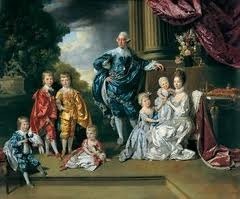 King George III, andQueen Charlotte with six of their fifteen children
King George III, andQueen Charlotte with six of their fifteen children
"October 19th, three o'clock Behold! in the avenue, the finest sight of the kind that ever was seen !—The sun bright—troops drawn up on each side—innumerable people—the King and Queen appearing with their numerous equipages, horse guards, attendants, etc. and numberless horsemen sent by Lord Petre to meet them, headed by his land-steward, with all the people he could collect— the park of artillery saluting, which was re-echoed in the woods with the shouts of the people—the rapidity with which the King's chaise ran on, scarcely five minutes having elapsed, from the time of its appearance at the top of the rising avenue, (a full mile and a half from the house,) to their Majesties coming up to the door—the lawn in one instant covered with horsemen—and the horses panting—all contributed to resemble the work of enchantment! From Brentwood, a double row of carriages had placed themselves behind the troops, the horses being taken off to prevent accidents.
"Lord and Lady Petre received their Royal Visitors at the door. Lord Petre handed the Queen up stairs, while the King, with Lady Petre, walked on together through the entrance-hall— carpeted for the occasion up to the carriage-door— towards the first drawing-room, into the great drawing-room, which shall henceforth be designated by the presence-chamber, where two state chairs were placed on a raised platform. Lord and Lady Petre then kissed their Majesties' hands, who soon shook off all form by their easy manner. They asked directly to see the house, and, followed by their suite, went through all the different apartments. On their return to the presence-chamber, the King desired to see Miss Petre, whom he played with, and afterwards took a great deal of notice of.
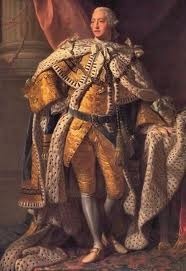 King George III by Ramsay
King George III by Ramsay
"At four o'clock, dinner was announced, when Lord Petre handed the Queen to the dining-room. Her chair alone was placed at the table, but her Majesty desired the ladies to sit down; and tabourets were immediately brought forward for Lady Egremont, lady of the bed-chamber, Lady Amherst, and Lady Petre. On no other occasion excepting at commerce, were they asked to sit down.
"His Majesty dined in the great hall, a couvert being laid only for him. He also desired the gentlemen to sit down; and stools were immediately placed near the table for Lord Lothian, gold stick, Lord Carmarthen, chamberlain to the Queen, General Carpenter, equerry to the King, Colonel Harcourt and Colonel St. John, aides-decamp, Lord Amherst, General Pearson, Majorgeneral Sir David Lindsay, as commanding officer of the day, Major-general Morrison, and Majorgeneral Fawcett. Lord Petre sat on the left hand of the King, and acted as cup-bearer. After the first glass was drunk, his Majesty ordered the wine round to his right, that he might not take the trouble to get up again.
[image error] Queen Charlotte 1779
". . . . . In rising from table at eight o'clock, Lord Petre poured rose-water upon his Majesty's hands, from a golden ewer and basin which were given by Mary, Queen of Scots, to the Earl of Derwentwater, his maternal grandfather. He then conducted his Majesty to the presence-chamber, bearing lights before him.
"After coffee, the King conversed for half an hour with the gentlemen in the outer drawingroom, to whom he talked of the army, and, with Lord Petre, chiefly about the camp. All the company then took their departure, leaving only the attendants.
"The King immediately proposed playing at commerce, and made the following party:—Lady Egremont, Lady Amherst, Lady Petre, Lord Lothian, Lord Carmarthen, Colonel St. John, and Colonel Harcourt. The latter won the first pool, and Lord Petre the second.
"Supper was prepared in the great hall at twelve o'clock. The Queen only sat down to supper, around whose chair the King, with the gentlemen, and a great number of attendants, stood at the bottom of the table. At one o'clock, their Majesties retired. Lord Petre carried lights before the King, and Lady Petre before the Queen, to their apartments.
"Here a little occurrence caused some disappointment. As their Majesties always carried their own little beds with them, the state bed had to be removed to make place for them, from within the gilt-iron guard that surrounded it. Fortunately, the tester was fastened from above, with the curtains, independent of the bedstead, and remained to form a stately awning to the two ordinary red and white check tent-beds.
"The next morning their Majesties breakfasted alone in the presence-chamber. Between nine and ten o'clock, they sent for Lord and Lady Petre, with whom they walked about the house, and up and down the south portico of the great saloon, until the carriages were ready to convey them to Warley Common. Here Lord Petre had prepared a stand, tacked and furnished in a very sumptuous manner, which was placed in the most advantageous position for seeing the sham-fight and the military movements, with which the King expressed his approbation in the strongest terms, but which were reported in the Gazette in an ordinary style.
"All passed on in the same manner as on the preceding day, excepting that the peers, and colonels of the regiments encamped at Warley, were asked to dine at the King's table, making a party of thirty. One hundred and thirty dishes were served up, besides high ornamental decorations in the centre. Among the dainties gathered from all parts of England, I observed in the poulterer's bill, a bustard, marked five guineas.
"His Majesty was in high spirits, conversed with cheerfulness and freedom, and did not rise from table till ten o'clock ; after which he proposed another pool at commerce, which his Majesty won, and in the course of the game drew kings twice. The second time he threw them on the table, he said, `Here are these things again, here are these things again.'
"At twelve, their Majesties retired to rest; and next morning they breakfasted in the presencechamber, as they had done on the preceding day. At ten o'clock, Lord and Lady Petre, with their little daughter, were sent for by the King, who throwing open one of the windows, that the whole party might be seen by the populace, who had collected from all parts in great crowds in front of the house, remained a considerable time—the King holding Miss Petre before him, and Lord Petre standing on his right, with Lady Petre on the left of the Queen. Their Majesties then, in the most obliging manner, expressed their thanks for the kind and handsome reception they had met with at Thorndon, which they condescendingly repeated several times.
"Lord and Lady Petre had the honour to kiss their Majesties' hands, as they had done on their arrival. Lord Petre then handed the King and Queen into their carriage—drawn by six beautiful greys—who drove off for Navestock, to dine with Lord and Lady Waldegrave, where Lord and Lady Petre were commanded to meet their Majesties; and they went up to town the following day, to attend the drawing-room at St. James's.
"As vails were not then abolished, the King left a hundred guineas for the servants, as also money for the poor."
And so he might in return for such lavish entertainments. The People's History of Essex by Duffield William Coller (1861) provides further details into the entertainments organized for the King: "The street and roadway from the London entrance of the town, down to the park gate, a distance of nearly two miles, were lined with soldiery; and the royal pair passed beneath a triumphal arch to the hull door, where they were received by Lord and Lady Petre. A royal levee, a grand dinner party, a concert, and a display of fireworks, filled the roll of festivity at the baronial hall; while the loyalty of Brentwood blazed forth at night in a general illumination, as brilliant as it could be made at a time when gas as yet lay slumbering undiscovered in its heap of coal dust. The following day his Majesty reviewed the little army which lay encamped at Warley, and afterwards held a levee upon the ground for the reception of the military officers and county gentry. While this was passing upon the green turf of the common—while the cannon were thundering out in mimic fight, troops of horse flying across the plain, and columns of infantry crashing through the neighbouring woods to show royalty how a battle was lost and won—a fairy-like surprise was preparing at Thorndon Hall. At the west end of the magnificent dining-room, a noble orchestra rose as if by magic. On the front was emblazoned the royal arms, with Fame sounding her trumpet, and underneath, in large characters, were the words —" Vivant Bex et Regina." On each side were finely-executed portraits of their Majesties, and guardian angels crowning them with laurel. The orchestra itself was filled with artists of firstrate talent The whole was carefully concealed till the royal party and the other guests were seated, and the course had been served, when on the first flourish of the royal fork, the screen was suddenly removed. The fine strains of " God save the King" bursting out from the midst of this flash of light and these things of beauty, gave it the air of an enchanted scene; and general expressions of delight greeted the noble host."
We now return to Reminiscences For My Children for the sorry aftermath of the Royal visit and to learn what Lord Petre, who had spent so much, on so many levels, received for his pains.
"From that period no particular mark of attention in any manner was ever shown to Lord and Lady Petre, by their Majesties King George III. and Queen Charlotte. On the contrary, they were not even asked to the Queen's concerts or private parties the following winter, or to any other entertainment ever after, solely on the plea of their religion (they were Catholics); and in 1798, his Majesty refused to sign Lord Petre's son's commission to a volunteer corps he had raised, because, his Majesty said, he could not help being aware that he was a Roman Catholic, having been in the chapel at Thorndon House."
VISIT OF KING GEORGE III. AND QUEEN CHARLOTTETOROBERT LORD PETRE, AT THORNDON HOUSE October 19th, 1778.
 General Lord Amherst
General Lord AmherstSeptember 22nd—General Lord Amherst was commanded by his Majesty to inform Lord Petre, that he was graciously pleased to accept of his offer to make Thorndon his residence, during his intended review of the troops encamped on Warley Common, on or about the 5th of October. Lord Petre, anxious to receive his sovereign with every mark of respect, duty, and affection, becoming an attached and loyal subject, set about immediately making every necessary preparation for his entertainment, which the vicinity of Thorndon to the capital enabled him to do with more expedition. His lordship sent for Mr. Bracken, his upholsterer, and asked him whether it was possible, in so short a time, to re-furnish the drawing-rooms, the state bed-room, and dressing-rooms —the drawing-room being forty feet by twenty-five, and twenty-three feet high, which is the height of all the rooms on the first floor. He replied, it might be done if a sufficient quantity of damask, of English manufacture, (as was ordered,) couldbe procured to cover those spacious apartments. Among other things ordered, were fifty tabourets to be covered with damask, as only kings and queeng upon such occasions sit upon chairs. In a few hours he sent down patterns, of which a beautiful light green was chosen for the drawing-rooms and the King's dressing-room, and a red and white damask for the state bed-room and the Queen's dressing-room.
"Mr. Davy, the house-steward, was despatched the next day to town, to procure trades-people of every description, who arrived at Thorndon in various conveyances, both public and private, amounting to one hundred, and who were all lodged and fed in the house. He was also daily employed in providing every luxury for the King's table; and was empowered by Lord Petre to order a service of gold, in addition to the family plate, which was very considerable. Much, also, was hired, and a quantity borrowed from the Duke of Norfolk, assisted by some families in the neighbourhood— Lord Waldegrave, Lady Mildemay, and Mr. Conyers. Every thing went on briskly, but no decided day had been named for the King's arrival.
[image error] Thorndon House
"October 3rd—An express came from Lord Amherst, to announce that his Majesty would not be at Thorndon before the 19th instant. The cooks and confectioners were therefore sent back to London; and three large dinners were given to the neighbours, to which the officers and their ladies were invited, who partook of the good things that had already been prepared, while the workpeople went on more leisurely, and with less fatigue.
"On the 15th, the fourteen additional men-cooks and confectioners returned, and re-commenced their culinary labours with great spirit, so that all was in readiness, in every department, by the 18th October.
 King George III, andQueen Charlotte with six of their fifteen children
King George III, andQueen Charlotte with six of their fifteen children"October 19th, three o'clock Behold! in the avenue, the finest sight of the kind that ever was seen !—The sun bright—troops drawn up on each side—innumerable people—the King and Queen appearing with their numerous equipages, horse guards, attendants, etc. and numberless horsemen sent by Lord Petre to meet them, headed by his land-steward, with all the people he could collect— the park of artillery saluting, which was re-echoed in the woods with the shouts of the people—the rapidity with which the King's chaise ran on, scarcely five minutes having elapsed, from the time of its appearance at the top of the rising avenue, (a full mile and a half from the house,) to their Majesties coming up to the door—the lawn in one instant covered with horsemen—and the horses panting—all contributed to resemble the work of enchantment! From Brentwood, a double row of carriages had placed themselves behind the troops, the horses being taken off to prevent accidents.
"Lord and Lady Petre received their Royal Visitors at the door. Lord Petre handed the Queen up stairs, while the King, with Lady Petre, walked on together through the entrance-hall— carpeted for the occasion up to the carriage-door— towards the first drawing-room, into the great drawing-room, which shall henceforth be designated by the presence-chamber, where two state chairs were placed on a raised platform. Lord and Lady Petre then kissed their Majesties' hands, who soon shook off all form by their easy manner. They asked directly to see the house, and, followed by their suite, went through all the different apartments. On their return to the presence-chamber, the King desired to see Miss Petre, whom he played with, and afterwards took a great deal of notice of.
 King George III by Ramsay
King George III by Ramsay"At four o'clock, dinner was announced, when Lord Petre handed the Queen to the dining-room. Her chair alone was placed at the table, but her Majesty desired the ladies to sit down; and tabourets were immediately brought forward for Lady Egremont, lady of the bed-chamber, Lady Amherst, and Lady Petre. On no other occasion excepting at commerce, were they asked to sit down.
"His Majesty dined in the great hall, a couvert being laid only for him. He also desired the gentlemen to sit down; and stools were immediately placed near the table for Lord Lothian, gold stick, Lord Carmarthen, chamberlain to the Queen, General Carpenter, equerry to the King, Colonel Harcourt and Colonel St. John, aides-decamp, Lord Amherst, General Pearson, Majorgeneral Sir David Lindsay, as commanding officer of the day, Major-general Morrison, and Majorgeneral Fawcett. Lord Petre sat on the left hand of the King, and acted as cup-bearer. After the first glass was drunk, his Majesty ordered the wine round to his right, that he might not take the trouble to get up again.
[image error] Queen Charlotte 1779
". . . . . In rising from table at eight o'clock, Lord Petre poured rose-water upon his Majesty's hands, from a golden ewer and basin which were given by Mary, Queen of Scots, to the Earl of Derwentwater, his maternal grandfather. He then conducted his Majesty to the presence-chamber, bearing lights before him.
"After coffee, the King conversed for half an hour with the gentlemen in the outer drawingroom, to whom he talked of the army, and, with Lord Petre, chiefly about the camp. All the company then took their departure, leaving only the attendants.
"The King immediately proposed playing at commerce, and made the following party:—Lady Egremont, Lady Amherst, Lady Petre, Lord Lothian, Lord Carmarthen, Colonel St. John, and Colonel Harcourt. The latter won the first pool, and Lord Petre the second.
"Supper was prepared in the great hall at twelve o'clock. The Queen only sat down to supper, around whose chair the King, with the gentlemen, and a great number of attendants, stood at the bottom of the table. At one o'clock, their Majesties retired. Lord Petre carried lights before the King, and Lady Petre before the Queen, to their apartments.
"Here a little occurrence caused some disappointment. As their Majesties always carried their own little beds with them, the state bed had to be removed to make place for them, from within the gilt-iron guard that surrounded it. Fortunately, the tester was fastened from above, with the curtains, independent of the bedstead, and remained to form a stately awning to the two ordinary red and white check tent-beds.
"The next morning their Majesties breakfasted alone in the presence-chamber. Between nine and ten o'clock, they sent for Lord and Lady Petre, with whom they walked about the house, and up and down the south portico of the great saloon, until the carriages were ready to convey them to Warley Common. Here Lord Petre had prepared a stand, tacked and furnished in a very sumptuous manner, which was placed in the most advantageous position for seeing the sham-fight and the military movements, with which the King expressed his approbation in the strongest terms, but which were reported in the Gazette in an ordinary style.
"All passed on in the same manner as on the preceding day, excepting that the peers, and colonels of the regiments encamped at Warley, were asked to dine at the King's table, making a party of thirty. One hundred and thirty dishes were served up, besides high ornamental decorations in the centre. Among the dainties gathered from all parts of England, I observed in the poulterer's bill, a bustard, marked five guineas.
"His Majesty was in high spirits, conversed with cheerfulness and freedom, and did not rise from table till ten o'clock ; after which he proposed another pool at commerce, which his Majesty won, and in the course of the game drew kings twice. The second time he threw them on the table, he said, `Here are these things again, here are these things again.'
"At twelve, their Majesties retired to rest; and next morning they breakfasted in the presencechamber, as they had done on the preceding day. At ten o'clock, Lord and Lady Petre, with their little daughter, were sent for by the King, who throwing open one of the windows, that the whole party might be seen by the populace, who had collected from all parts in great crowds in front of the house, remained a considerable time—the King holding Miss Petre before him, and Lord Petre standing on his right, with Lady Petre on the left of the Queen. Their Majesties then, in the most obliging manner, expressed their thanks for the kind and handsome reception they had met with at Thorndon, which they condescendingly repeated several times.
"Lord and Lady Petre had the honour to kiss their Majesties' hands, as they had done on their arrival. Lord Petre then handed the King and Queen into their carriage—drawn by six beautiful greys—who drove off for Navestock, to dine with Lord and Lady Waldegrave, where Lord and Lady Petre were commanded to meet their Majesties; and they went up to town the following day, to attend the drawing-room at St. James's.
"As vails were not then abolished, the King left a hundred guineas for the servants, as also money for the poor."
And so he might in return for such lavish entertainments. The People's History of Essex by Duffield William Coller (1861) provides further details into the entertainments organized for the King: "The street and roadway from the London entrance of the town, down to the park gate, a distance of nearly two miles, were lined with soldiery; and the royal pair passed beneath a triumphal arch to the hull door, where they were received by Lord and Lady Petre. A royal levee, a grand dinner party, a concert, and a display of fireworks, filled the roll of festivity at the baronial hall; while the loyalty of Brentwood blazed forth at night in a general illumination, as brilliant as it could be made at a time when gas as yet lay slumbering undiscovered in its heap of coal dust. The following day his Majesty reviewed the little army which lay encamped at Warley, and afterwards held a levee upon the ground for the reception of the military officers and county gentry. While this was passing upon the green turf of the common—while the cannon were thundering out in mimic fight, troops of horse flying across the plain, and columns of infantry crashing through the neighbouring woods to show royalty how a battle was lost and won—a fairy-like surprise was preparing at Thorndon Hall. At the west end of the magnificent dining-room, a noble orchestra rose as if by magic. On the front was emblazoned the royal arms, with Fame sounding her trumpet, and underneath, in large characters, were the words —" Vivant Bex et Regina." On each side were finely-executed portraits of their Majesties, and guardian angels crowning them with laurel. The orchestra itself was filled with artists of firstrate talent The whole was carefully concealed till the royal party and the other guests were seated, and the course had been served, when on the first flourish of the royal fork, the screen was suddenly removed. The fine strains of " God save the King" bursting out from the midst of this flash of light and these things of beauty, gave it the air of an enchanted scene; and general expressions of delight greeted the noble host."
We now return to Reminiscences For My Children for the sorry aftermath of the Royal visit and to learn what Lord Petre, who had spent so much, on so many levels, received for his pains.
"From that period no particular mark of attention in any manner was ever shown to Lord and Lady Petre, by their Majesties King George III. and Queen Charlotte. On the contrary, they were not even asked to the Queen's concerts or private parties the following winter, or to any other entertainment ever after, solely on the plea of their religion (they were Catholics); and in 1798, his Majesty refused to sign Lord Petre's son's commission to a volunteer corps he had raised, because, his Majesty said, he could not help being aware that he was a Roman Catholic, having been in the chapel at Thorndon House."
Published on October 19, 2011 00:11
October 18, 2011
An Elopement, a Stately Home and a Royal Visit
From The Letter-bag of Lady Elizabeth Spencer-StanhopeMarch 1st. (1805)"Your father is very well. He was sorry for the fate of the Slave Trade Bill last night. The Elopement and distress in the House of Petre has been the chief subject of conversation for the last few days. Miss Petre made her escape from her father's house in Norfolk with her Brothers' tutor on Monday last. It is said they are at Worcester and married only by a Catholic Priest. However, Lord and Lady P. are gone there and it is expected she will be brought back to-night. They can do nothing but get her married to the man at Church. She is 18, he 30, and no Gentleman. She was advertised and 20 guineas reward offered to anyone who could give an account of the stray sheep. It is a sad History. What misery this idle girl has caused her parents, and probably ensured her own for life."
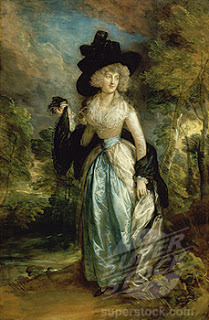 Lady Petre by Gainesborogh copyright The Huntington LibraryMarianne Stanhope to John Spencer Stanhope. March 3rd. (1805)"You have doubtless read in the papers the account of Miss Petre's elopement with her brother's tutor, Mr Philips. He is a very low man, quite another class, always dined with the children, never associated the least with the family, a sort of upper servant. Lady Petre thought him rather forward, he was to have left them at Easter. She had seen her daughter at twelve the night before, and only missed her at breakfast . Her clothes were all gone. A friend of his, a brandy merchant, accompanied her in the chaise, the tutor rode first. A clergyman refused to marry them some time ago at Lambeth, but they have since been married at Oxford by a Mr. Leslie, a Catholic priest, which is not enough. They are not yet discovered."The Miss Petre referred to above was Maria Juliana, daughter of Robert Edward, 10th Baron Petre. She was born 22 January 1787, married on 30th April 1805, to Stephen Philips, Esq., and died 27th January 1824. I have been unable to find much else concerning her life, but here is her obituary, as it appeared in The Catholic Spectator: "The Hon. Mrs. Philips, wife of Stephen Philips, Esq. of H. M. Customs, and eldest daughter of the late Rt. Hon. Edw. Lord Petre, and Lady Mary, surviving, of a decline, aged 37. To the ardent and unremitting zeal of this Lady, in her personal and most charitahle attentions to the Female Catholir Charity School, at Stratford. Essex, may principally he attrihuted her lamented and premature decease, She has left five children and a hushand to deplore the loss of a model for the Christian wife aud mother."
Lady Petre by Gainesborogh copyright The Huntington LibraryMarianne Stanhope to John Spencer Stanhope. March 3rd. (1805)"You have doubtless read in the papers the account of Miss Petre's elopement with her brother's tutor, Mr Philips. He is a very low man, quite another class, always dined with the children, never associated the least with the family, a sort of upper servant. Lady Petre thought him rather forward, he was to have left them at Easter. She had seen her daughter at twelve the night before, and only missed her at breakfast . Her clothes were all gone. A friend of his, a brandy merchant, accompanied her in the chaise, the tutor rode first. A clergyman refused to marry them some time ago at Lambeth, but they have since been married at Oxford by a Mr. Leslie, a Catholic priest, which is not enough. They are not yet discovered."The Miss Petre referred to above was Maria Juliana, daughter of Robert Edward, 10th Baron Petre. She was born 22 January 1787, married on 30th April 1805, to Stephen Philips, Esq., and died 27th January 1824. I have been unable to find much else concerning her life, but here is her obituary, as it appeared in The Catholic Spectator: "The Hon. Mrs. Philips, wife of Stephen Philips, Esq. of H. M. Customs, and eldest daughter of the late Rt. Hon. Edw. Lord Petre, and Lady Mary, surviving, of a decline, aged 37. To the ardent and unremitting zeal of this Lady, in her personal and most charitahle attentions to the Female Catholir Charity School, at Stratford. Essex, may principally he attrihuted her lamented and premature decease, She has left five children and a hushand to deplore the loss of a model for the Christian wife aud mother."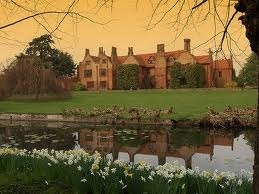 Ingatestone Hall
Ingatestone HallMiss Petre's, or rather Mrs. Philips's, ancestral home was Ingatestone Hall, about which we read in Chambers's Journal (1883) - "Again, an important instance of these secret chambers is that existing at Ingatestone Hall, in Essex, which, it may be remembered, was in years gone by a summer residence belonging to the abbey of Barking. It came with the estate into possession of the family of Petre in the reign of Henry VIII., and continued to be occupied as their family seat until the latter half of the last century. The hiding-place, which is fourteen feet long, two feet broad, and ten feet high, was discovered in the south-east corner of a small room attached to what was probably the host's bedroom. Underneath the floor-boards, a hole or trap-door about two feet square was found, with a twelvestep ladder to descend into the room below, the floor of which was composed of nine inches of dry sand. This, on being examined, brought to light a few bones, which, it has been suggested, are the remains of food supplied to some unfortunate occupant during confinement. The existence of this retreat, it is said, must have been familiar to the heads of the family for several generations; evidence of this circumstance being afforded by a packing-case which was found in the secret chamber, and upon which was the following direction: 'For the Right Honble the Lady Petre, at Ingatestone Hall, in Essex.' The wood, also, was in a decayed state, and the writing in an antiquated style . . "
Ingateson Hall has long been rumoured to have been the setting for Mary Elizabeth Braddon's novel, Lady Audley's Secret. The estate was virtually self-supporting with its own millhouse, bakehouse, dairy, dovecote and granaries among other features. The Petre family also owns Thorndon Hall, complete with deer park. Formerly called "Thorndon Old Hall," it burned down in the early 1880s and was rebuilt. Tommorrow, we'll learn about King George III and Queen Charlotte's visit to Thorndon Hall and the expense Miss Petre's father, the 10th Baron, lavished upon the royal visit.
Published on October 18, 2011 00:57
October 16, 2011
The Dobson Painting at Ashdown House by Guest Blogger Nicola Cornick
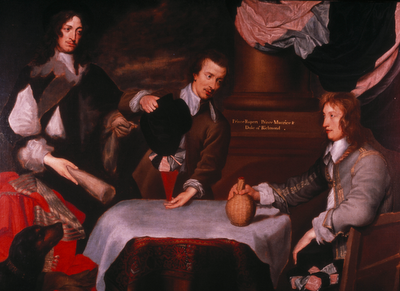
On the third landing at Ashdown House hangs a splendid group portrait of three prominent cavaliers. The artist is William Dobson, court painter to King Charles I, and the picture was painted in about 1644, during the English Civil War, when Charles' court was based in Oxford. The names that are painted onto the picture are those of Prince Rupert of the Rhine, his brother Prince Maurice and the Duke of Richmond. This is the first mystery about the painting – the names of the sitters were added at a later date and two of them are incorrect. Whilst Prince Rupert is definitely the focal point of this painting, his comrades are Colonel Murray and Colonel Russell. A second mystery is why the painting is unfinished. The detail on Prince Rupert's clothes has not been completed and there is no glass containing the red wine. We can speculate that perhaps the person who originally commissioned the painting never returned from the wars to pay for it.
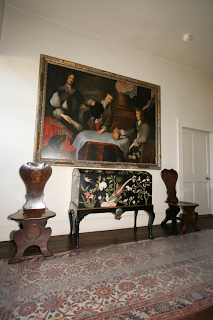
It is entirely appropriate that this portrait should hang at Ashdown, a hunting lodge built circa 1662 for William, First Earl of Craven. Craven was a lifelong supporter of the Royalist cause and an ardent admirer of Prince Rupert's mother, the beautiful and charismatic Elizabeth, Queen of Bohemia, the Winter Queen. It was Elizabeth who bequeathed to William Craven the splendid portrait collection that hangs in Ashdown House today. Craven and Rupert were friends and comrades in arms during the 30 Years War that ravaged Europe during the early years of the 17th century. Craven was also the executor or Rupert's will and guardian to his illegitimate daughter Rupertina.
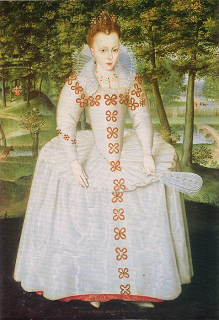 Elizabeth, Queen of Bohemia
Elizabeth, Queen of BohemiaThe Dobson Picture, as we call it, is packed full of symbols of loyalty. It portrays Prince Rupert as the saviour of the Royalist cause. His colours, the pink, the grey and the black, swathe the pillar of strength in the back of the picture. The same colours are on the cockade that is being dipped into the red wine, which will be raised in loyal toast to the King. The crossed gloves symbolise politics and the monarchy. The picture also contains the ultimate symbol of loyalty – a dog with Prince Rupert's initials monogrammed onto its collar. It is gazing up at Rupert with devotion.
Rupert was renowned for his love of animals, a curious and rather endearing trait in a man also known for his ferocity in battle. In this he was said to take after his mother who preferred "her dogs, her hunting and her monkeys" to her children, apparently in that order. Her preference for her pets may explain why Elizabeth of Bohemia was estranged from all of her children at one time or another. There is a story that relates that when Elizabeth and her family were forced to flee Bohemia after the Battle of the White Mountain in 1620, the butler was going through the palace to make sure that nothing valuable had been left behind and found Rupert, three years old at the time, abandoned in the nursery. He picked the child up and hurried after Elizabeth's carriage, only to discover that she had made sure that her pet monkey Jacko was safely installed inside!
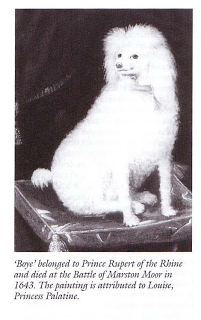
Prince Rupert's most famous dog was a Standard Poodle called Boy who ran with his cavalry. Boy was a particular target for the Roundheads, who became obsessed with the idea that he was Rupert's familiar and attributed to him various magic powers, including that he was fluent in various languages, that he was invulnerable in battle and that he could put a spell on the enemy. Boy began to feature in Roundhead propaganda. A pamphlet of 1643 "Observations upon Prince Rupert's Dogge called Boy" reported that Boy sat beside Rupert in meetings of the King's Council and that Charles I allowed him to sit on the throne. Boy attended church services and was the toast of the Royalists after various victories. The Roundheads tried both poison and prayer to destroy "this Popish, profane dog, more than halfe a divill, a kind of spirit." Although the dog was a white poodle they portrayed him as black in the pictures in order to associate him more closely with the devil.
Perhaps inevitably, Boy fell prey to a Roundhead bullet at the Battle of Marston Moor and proved not to be invulnerable after all. The Puritans claimed in another pamphlet "A Dog's Elegy or Rupert's Tears" that Boy had been killed by a valiant soldier who had skill in necromancy. The verse ran: "Lament poor cavaliers, cry, howl and yelp, For the great losse of your malignant whelp." Poor Boy! In an age of superstition it is easy to see how men might attribute magic powers to such a creature and also why the enemy might use Boy as a symbol of the Royalist cause. In the same way it is easy to see how Boy was a talisman and mascot to the Royalists who mourned his loss very deeply. He went down in the army records as the first official British Army Dog, which seems a fitting tribute to a loyal pet.
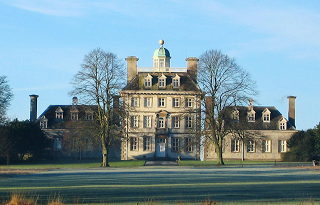 Ashdown House
Ashdown House Ashdown House is currently undergoing a major conservation project that will see the repair of the roof, balustrade and cupola, the restoration of the white chalk walls to their original dazzling glory and the renovation of the interior. "Hard Hat Tours" up the scaffolding will be offered from April 2012 to see the conservation in action. The progress of the project and much more information on the history of the house can be found online at www.ashdownhouse.blogspot.com
Published on October 16, 2011 00:15
October 14, 2011
The Trouble With Horses
From The Creevey Papers
October 23rd. (1837) —Since August 30th, nearly two months, I have written not a line, for I have had nothing to record of public or general interest, and have felt an invincible repugnance to write about myself or my own proceedings. Having nothing else to talk of, however, I shall write my own history of the last seven weeks, which is very interesting to me inasmuch as it has been very profitable. Having asked George Bentinck to try my horse 'Mango' before Doncaster, we went down together one night to Winchester race-course and saw him tried. He won the trial and we resolved to back him. This we accomplished more successfully than we expected, and ten days after he won the St. Leger, and I won about 9,000Z. upon it, the first great piece of good fortune that ever happened to me. Since Doncaster, I have continued (up to this time) to win at Newmarket, so that my affairs are in a flourishing condition, but, notwithstanding these successes, I am dissatisfied and disquieted in my mind, and my life is spent in the alternations of excitement from the amusement and speculation of the turf and of remorse and shame at the pursuit itself. One day I resolve to extricate myself entirely from the whole concern, to sell all my horses, and pursue other occupations and objects of interest, and then these resolutions wax faint, and I again find myself buying fresh animals, entering into fresh speculations, and just as deeply engaged as ever. It is the force of habit, a still unconquered propensity to the sport, and a nervous apprehension that if I do give it up, I may find no subject of equal interest.
October 23rd. (1837) —Since August 30th, nearly two months, I have written not a line, for I have had nothing to record of public or general interest, and have felt an invincible repugnance to write about myself or my own proceedings. Having nothing else to talk of, however, I shall write my own history of the last seven weeks, which is very interesting to me inasmuch as it has been very profitable. Having asked George Bentinck to try my horse 'Mango' before Doncaster, we went down together one night to Winchester race-course and saw him tried. He won the trial and we resolved to back him. This we accomplished more successfully than we expected, and ten days after he won the St. Leger, and I won about 9,000Z. upon it, the first great piece of good fortune that ever happened to me. Since Doncaster, I have continued (up to this time) to win at Newmarket, so that my affairs are in a flourishing condition, but, notwithstanding these successes, I am dissatisfied and disquieted in my mind, and my life is spent in the alternations of excitement from the amusement and speculation of the turf and of remorse and shame at the pursuit itself. One day I resolve to extricate myself entirely from the whole concern, to sell all my horses, and pursue other occupations and objects of interest, and then these resolutions wax faint, and I again find myself buying fresh animals, entering into fresh speculations, and just as deeply engaged as ever. It is the force of habit, a still unconquered propensity to the sport, and a nervous apprehension that if I do give it up, I may find no subject of equal interest.
Published on October 14, 2011 00:41
October 12, 2011
Speaking of Bridget Jones
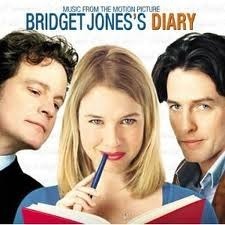
Tis the season for Bridget Jones what with Bridget Jones: The Musical set to hit the West End in 2012 and Christmas being right around the corner. Yes, Christmas. You know you'll be watching Bridget Jones's Diary during the holidays just to see those awful holiday sweaters again. Well, we can't wait. You probably can't wait, either, so here's the movie trailer to get you into the spirit of things. Click here to watch.
Published on October 12, 2011 00:23
Kristine Hughes's Blog
- Kristine Hughes's profile
- 6 followers
Kristine Hughes isn't a Goodreads Author
(yet),
but they
do have a blog,
so here are some recent posts imported from
their feed.



